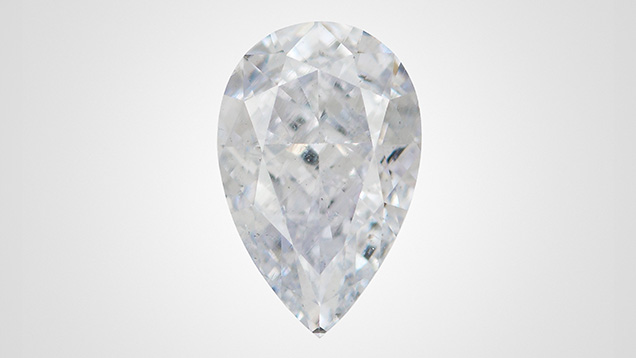Cloud Inclusions Causing Fancy Light Blue Color in Diamond

The most common cause of blue color in diamond is the incorporation of boron into the diamond crystal lattice (type IIb), such as the recently auctioned Cullinan Blue (Summer 2022 Lab Notes, pp. 216–217). Other causes of blue color in diamond are hydrogen-related absorption (C.H. van der Bogert et al., “Gray-to-blue-to-violet hydrogen-rich diamonds from the Argyle mine, Australia,” Spring 2009 G&G, pp. 20–37) and irradiation, either natural or artificial. Artificial irradiation using an electron beam is a common diamond treatment (Winter 2020 Lab Notes, pp. 517–518).

Recently submitted to the New York laboratory for colored diamond grading service was a 2.20 ct Fancy Light grayish blue diamond (figure 1). Compared to the Cullinan Blue, which was graded as Fancy Vivid blue on GIA’s color grading scale, this diamond was type IIa (i.e., no boron) (figure 2). In addition to the absence of boron-related impurities, this diamond lacked any hydrogen-related impurities (observed in the ultraviolet/visible/near-infrared spectrum in figure 3) (van der Bogert et al., 2009) or any GR1-related color centers, thus ruling out these major causes of blue color in diamond. Instead, the UV absorption for the 2.20 ct diamond was similar to what would be expected for a yellow type Ib (isolated nitrogen) diamond (figure 3).

The diamond was heavily included with fine cloud-like inclusions, giving it a milky appearance (figure 4). Clouds, sometimes hydrogen-related, often cause gray, brown, black, or even white color in natural diamonds (S. Eaton-Magaña et al., “Natural-color fancy white and fancy black diamonds: Where color and clarity converge,” Fall 2019 G&G, pp. 320–337). In this case, the cloud micro-inclusions caused Rayleigh light scattering, creating a desirable blue color and not the expected yellow color resulting from a slight rise in absorption from lower to higher energy.
Based on these cloud inclusions, the diamond was given a final color grade of Fancy Light grayish blue, a natural origin of color, and an I3 clarity grade.
.jpg)


